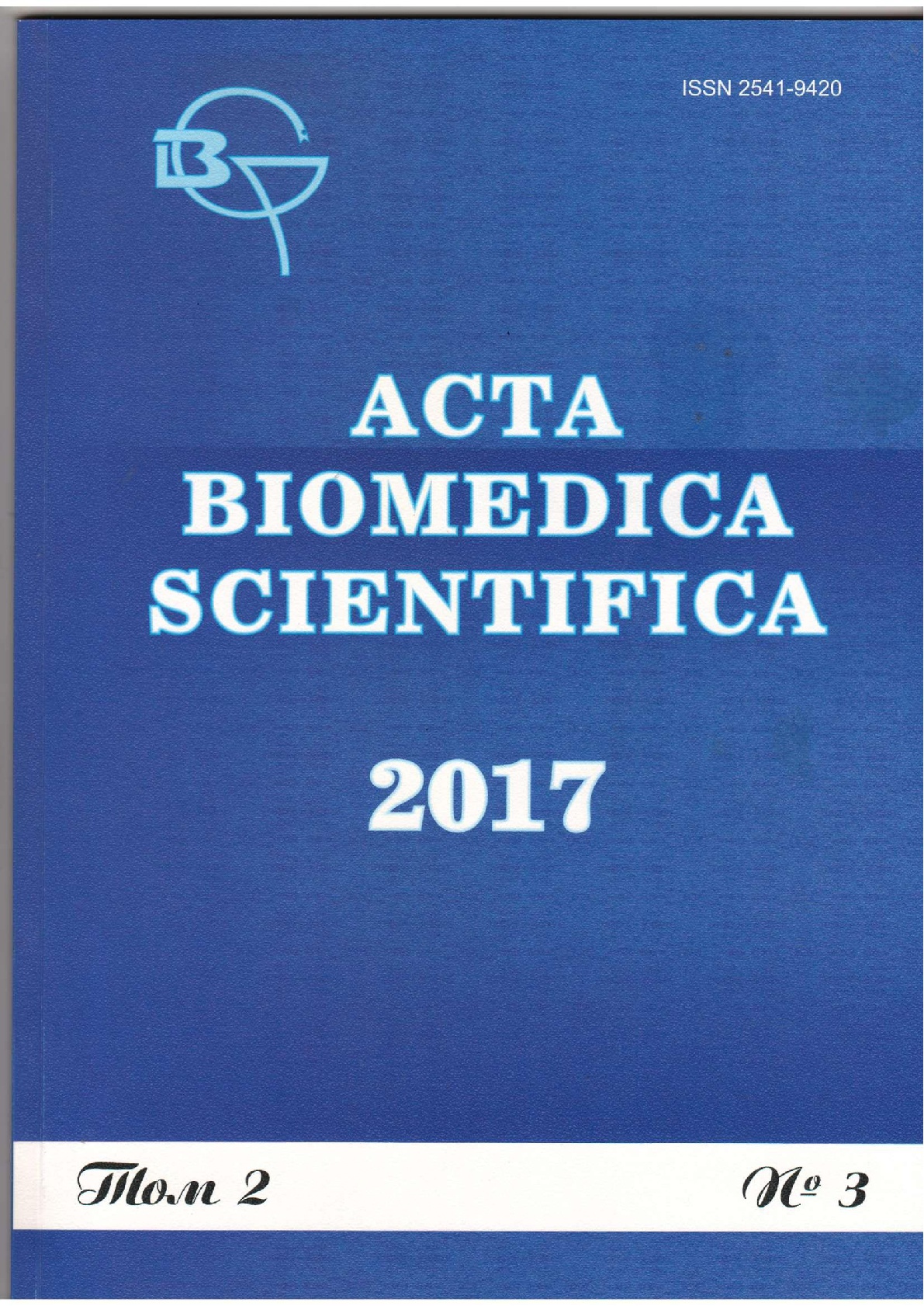Irkutsk, Irkutsk region, Russian Federation
Irkutsk, Irkutsk region, Russian Federation
Irkutsk, Irkutsk region, Russian Federation
Irkutsk, Irkutsk region, Russian Federation
Pelvic inflammatory diseases occupy a special place in the structure of general morbidity, and are polymicrobial in nature with dominance of opportunistic microorganisms, in particular bacteria of the family Enterobacteriaceae.The aim was to study the composition of the vaginal microbiota in women of reproductive age with pelvic inflammatory diseases, as well as to determine the sensitivity of isolated microorganisms to antibiotics and bacteriophages.The study included 70women of reproductive age, among them 37were diagnosed with colpitis and cervicitis, 33women in the comparison group (women screened for a diagnosis). Isolated microorganisms were identified by abdominoperineal methods, including the disk diffusion method to determine the sensitivity of microorganism cultures of Enterobacteriaceae family to antibiotics, and the method of crosses (evaluation of lytic activity of bacteriophages by the number of crosses) to determine the sensitivity to specific therapeutic bacteriophages.Vaginal biocenosis was characterized by deficit of lactobacilli (<106CFU/ml in 100%), the presence of conditionally pathogenic microflora: bacteria of Enterobacteriaceae family, coccal flora and Candida fungi. From 60.0 to 89.3% of Enterobacteria strains were resistant to aminoglycosides and quinolones, but also had a low level of sensitivity to therapeutic bacteriophages.The obtained data indicate the reduction of colonization resistance of vaginal mucosa in pelvic inflammatory diseases and specify the need to use medicinal drugs only under medical supervision to prevent clinically significant drug resistance.
Enterobacteriaceae, antibiotics, bacteriophages, inflammatory diseases of the pelvic organs
1. AslanovBI, ZuevaLP, KaftyrevaAL, BoytsovAG, AkimkinVG, DolgiyAA, BrusinaEB, DrozdovaOM (2014). Rational use of bacteriophage in medical and anti-epi-demic practice. Federal clinical guidelines [Ratsional’noe primenenie bakteriofagov v lechebnoy i protivoepidemi-cheskoy praktike. Federal’nye klinicheskie metodicheskie rekomendatsii], 20
2. BachinskayaEN (2000). Causative agents of commu-nity-acquired pneumonia at the turn of a new millenni-um [Vozbuditeli vnebol’nichnykh pnevmoniy na poroge novogo tysyacheletiya]. Antibiotiki i khimioterapiya, (11), 21-28.
3. BurmenskayaOV, BayramovaGR, NepshaOS, Tro-fimovDY, MuravevaVV, AbakarovaPR, StrelchenkoDA, KryazhevaVS, SukhikhGT (2014). Species composition of lactic acid bacteria in nonspecific vaginitis and bacterial vaginosis and its effect on local immunity [Vidovoy sostav laktobakteriy pri nespetsificheskikh vaginitakh i bakte-rial’nom vaginoze i ego vliyanie na lokal’nyy immunitet]. Akusherstvo i ginekologiya, (1), 41-45.
4. VoropaevaSD (2008). Etiology, pathogenesis, and antimicrobial therapy of inflammatory diseases of the pelvic organs in women [Etiologiya, patogenez i antibak-terial’naya terapiya vospalitel’nykh zabolevaniy organov malogo taza u zhenshchin]. Consilium medicum, (1), 25-31.
5. ZheldakovaRA (2004). Mechanisms of antibiotic bio-synthesis and their effect on the cells of microorganisms: teaching materials for students [Mekhanizmy biosinteza antibiotikov i ikh deystvie na kletki mikroorganizmov: Ucheb.-metod. kompleks dlya studentov spetsial’nosti 1-31.01.01 «Biologiya»], 111.
6. ZakharenkoSM (2013). Bacteriophage: modern aspects of the application, prospects for the future [Bak-teriofagi: sovremennye aspekty primeneniya, perspektivy na budushchee]. Meditsinskiy sovet, (10), 72-74.
7. MingalevaVV, AbramishviliYG, MetelevaNS (2015) Comparative analysis of the characteristics of chronic cervicitis in women of reproductive age [Sravnitel’nyy analiz kharakteristik khronicheskogo tservitsita sheyki matki u zhenshchin reproduktivnogo vozrasta]. Kubanskiy nauchnyy meditsinskiy vestnik, (6), 82-89.
8. MyasoedovaSS, LevanovaLA, PodoninaNM (2010). Etiology and pathogenesis of inflammatory diseases of women’s reproductive tract [Etiologiya i patogenez vospolitel’nykh zabolevaniy reproduktivnogo trakta zhenshchin]. Meditsina v Kuzbasse, (1), 16-19.
9. PopkovaSM, RakovaEB, KhramovaNE, Danusev-ichIN, ShabanovaNM, SerdyukLV, NemchenkoUM, Ivano-vaEI (2013). Microecological combination of vaginal and intestinal biotopes in women with inflammatory diseases of the lower floor of the genital tract and in adolescent girls with ovarian dysfunction [Mikroekologicheskie sochetani-ya vaginal’nogo i kishechnogo biotopov u zhenshchin s vospalitel’nymi zabolevaniyami nizhnego etazha polovogo trakta i devochek-podrostkov s disfunktsiey yaichnikov]. Sibirskiy nauchnyy meditsinskiy zhurnal, 33(4), 77-84.
10. Potaturkina-NesterovaNI, MyasnikovAV, NemovaIS, VolginaTI (2010) Characteristics of vaginal microbiota at inflammatory diseases of internal genital organs [Kharak-teristika mikrobioty vlagalishcha pri vospalitel’nykh zabolevaniyakh vnutrennikh polovykh organov].Uspekhi sovremennogo estestvoznaniya, (5), 66
11. RakhmatulinaMR, ShatalovaAY (2009). Modern ideas about microbiocenosis of vaginal biotope and its disorders in women of reproductive age [Sovremen-nye predstavleniya o mikrobiotsenoze vaginal’nogo biotopa i ego narusheniyakh u zhenshchin reproduk-tivnogo vozrasta]. Vestnik dermatologii i venerologii, (3), 38-42





